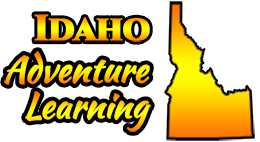Wildfires, climate change and ecosystem services
Submitted by jesler on Thu, 2017-06-22 00:00
Good Morning!
As I write this from back home in CDA, the team is still up the North Fork of the CDA River basin. Today's adventures will be up Grassy Mountain and at the trailhead of Trail 20; a 5 mile, non-motorized USFS trail connecting the headwaters of the North Fork between Jordan Camp and Teepee Creek.
Teachers are spending their morning with Will Young from the USFS, and will be exploring the role of wildfires in management of ecosystem servies on federal public lands in North Idaho. Will has been helping with AL@CDA for three years now and has become one of our favorite experts for helping teachers connect workshop content to the classroom!
The afternoon will give teachers an option: continue to work with Will and learn about snorkeling for trout population counts, or, hiking the beginning stretch of Trail 20.
The team will be returning later this evening, so please stay tuned for more detailed blog posts!
Until then, what are your thoughts: How do you think ecosystem services change before and after wildfires on federal public lands? How should land management agencies like ths USFS prepare for how ecosystem services will likey change in North Idaho's forests under climate change? What stakeholders should these managers make sure to consider in these types of decisions?

Comments
Ecosystem Services
I fear that under our current president North Idahoans will have to take a closer look at how to effectively control more forest fires as our region continues to warm up. More steps need to be taken at our federal level to reduce as much carbon in the atmosphere as possible. Our country should not be pulling out of the Paris Agreement. This is not some political rant, this is an ecological rant. We know that increasing water temps lead to less dissolved oxygen (DO) in the water, which in turn causes major food chain problems within our water ways. The stakeholders that need to be considered are the local community. If warmer temps mean more forest fires, then the locals need to be informed of best practices to reduce the threat of forest fires in our changing environment.